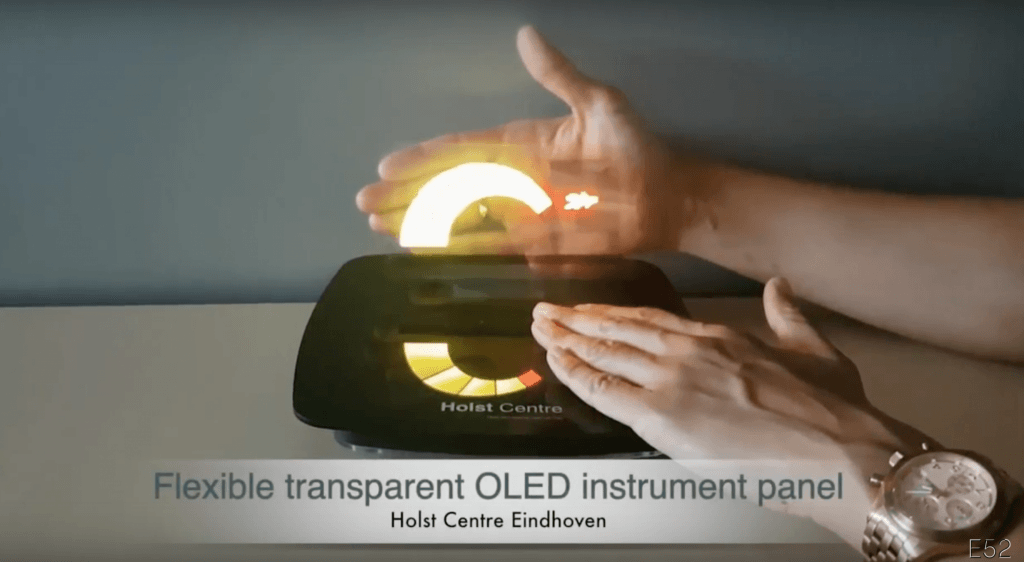

Holst Centre is using this week’s Automotive Interior Expo 2017 at Messe Stuttgart to show the newest developments in flexible electronics. Holst Centre is at the forefront of the development of flexible electronics, that can be embedded directly into fabrics, plastics and construction materials to create systems that conform to our bodies, the surroundings of our daily life including consumer products, interiors, and transport vehicles.
In Holst Centre’s hybrid printed electronics program, printed materials and silicon-based electronics are combined to obtain form freedom. “We are able to design fully stretchable systems that can be applied in fabric integration”, a representative of Holst Eindhoven said. “Bendable systems have been developed for OLED functionalities with a minimum bending radius of 500µm based on substrates even as thin as 25µm. In addition to this, our OLED program has developed opaque and transparent OLED systems with fine patterning for automotive applications and signage.”
By tuning thermal and pressure stability Holst is able to produce prototypes of in-mold electronics (IME) with complex 3D shapes by thermoforming or injection molding processes. “These so called smart skins are realized by combining printed electronics with dedicated materials, designs and components. All technologies are ready for upscaling and manufacturing.”
The functionalities Holst Centre focuses on are sensor systems like capacitive, pressure, temperature and body monitoring by bioimpedance, lighting, and sensors by large area OLEDs and LED systems, low power sensor system based on silicon technology and energy related components like (organic) photovoltaics and batteries.
One of the demonstrators of Holst Centre’s technologies at the expo in Stuttgart is a flexible transparent OLED instrument panel (see video).









